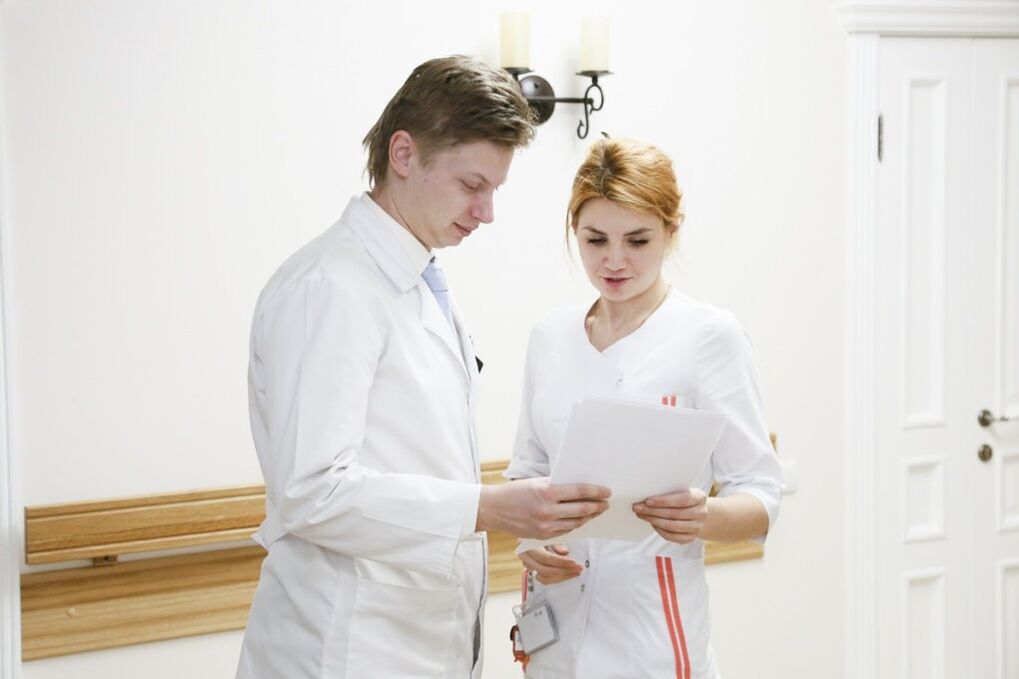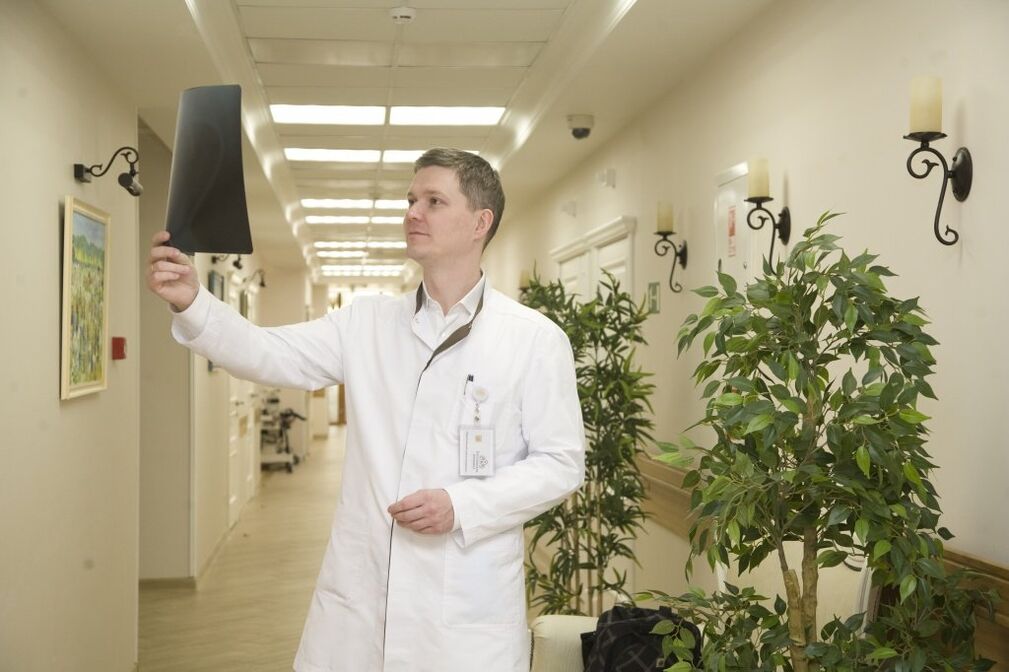76% of the population experiences back pain during the year;In 7% of cases, patients complain of acute back pain.Rheumatologists of the hospital determine the cause of back pain using the latest instrumental and laboratory research methods.To relieve pain and treat patients better, doctors prescribe modern drugs that are highly effective and have minimal side effects.Rehabilitation specialists use innovative methods of rehabilitation therapy to speed up the recovery process for patients with back pain.
What are the types of back pain?There are 4 types of back pain: local (local), projection, radicular (radicular) and pain caused by muscle spasm.The most common forms of back pain are combined.Lumboischialgia is characterized by 3 forms of pain: pyrroidifis, gastrochemius and gastrochemius, muscle-tonic in the form of neurostrophic synchrony.
There is primary and secondary back pain.Primary pain syndrome most often develops between the ages of 20 and 50.It is based on the following mechanical factors:
- Spondylosis and intervertebral osteochondrosis;
- Dysfunction of the musculo-ligament apparatus of the back;
- Intervebral disc herniation.
Psychogenic back pain in its pure form is rare.A patient suffering from a mental disorder is often difficult to diagnose because they have other neurological disorders that can cause pain.Moderate pain syndrome prevails in patients under twenty years of age and over fifty years of age.
Doctors consider pain lasting less than six weeks to be acute, pain lasting six to twelve weeks to be subacute, and pain lasting more than twelve weeks to be chronic.Muscle pain in the back occurs after myositis, osteochondrosis and injury.Patients with acute, subacute, and chronic low back pain differ in their prognosis for recovery and return to work.Rheumatologists use different approaches to diagnose and treat the cause of different types of pain.

Causes of back pain
One of the most common causes of back pain is traumatic lesions of the spine caused by excessive stress during stereotypical physical activity and sports.Such injuries have the following consequences:
- Vertebral fracture;
- Deformation or collapse of intervertebral discs;
- Inflammation and stretching of the joint capsule;
- Tearing of ligaments of the spine.
Microtrauma can occur as a result of an unsuccessful sudden movement during regular physical activity.
The following causes of back pain have also been identified:
- Curvature of the spine;
- Neuralgia;
- Osteochondrosis;
- Compression of nerve endings;
- Arthritis and inflammatory diseases;
- Oncological spinal tumors;
- Fascia damage;
- Muscle spasm.
The causes of chronic back pain can be diseases of internal organs (heart, lungs, kidneys), burns, cancer pathology, a sedentary lifestyle and emotional overload.Severe back pain can be caused by uncontrolled use of certain drugs.If the back pain radiates to the leg, you should think about sacral radiculitis.Back pain in the lumbar region is characteristic of diseases of the intestines, kidneys, prostate gland and diseases of the reproductive system in women.Pain in the spine in the middle of the back can be a manifestation of myocardial infarction.Pain under the ribs from the back occurs with intercostal neuralgia.
Recently, the term "non-specific low back pain" is often found in clinical guidelines that address the problem of low back pain.It refers to pain associated with musculoskeletal disorders without signs of damage to the cervical, thoracic, lumbar and sacral roots or specific injuries to the spine.
Determining the cause of back pain
The hospital has unique diagnostic capabilities that allow you to quickly determine the cause of back pain.Doctors make connections between the clinical manifestations of the disease and data from additional research methods.The examination program for a patient with back pain includes the following diagnostic measures:
- X-ray examination of the spine;
- Computed tomography;
- Magnetic resonance imaging.
X-ray examination has an important diagnostic value for back pain.Standard diagnostic methods include radiographs in anteroposterior and lateral projections, and functional spondylograms in maximal flexion and extension positions.Computed tomography and magnetic resonance imaging allow to clarify the localization of the pathological process.
Patients with back pain are prescribed the following types of instrumental studies:
- Electrocardiography (for cardiac dysfunction);
- Contrast-enhanced magnetic resonance or computed tomography;
- Optical topography of the skeleton and stabilization diagnostics;
- Ultrasound examination of joints and spine;
- Densitometry (determination of bone tissue density);
- Electromyography;
- Spiroareiocardiorittography.
Patients undergo a complete blood count, urinalysis, and urine tests for C-Reactive Protein and Rheumatoid factor.The differential diagnosis for acute back pain is made between the following diseases:
- Potentially dangerous diseases of vertebral and non-vertebral origin (cauda equina, traumatic, tumor, swelling and swelling and infectious lesions of internal organs);
- Compression radiculopathy;
- Benign musculoskeletal back pain.
Only after establishing the exact cause of back pain, doctors prepare a treatment plan for the patient.
Treatment for back pain
The pain syndrome is based on 2 main mechanisms that determine the management of a patient with back pain: damage to the spine and spasm or spasm of muscles and ligaments.Nonsteroidal anti-inflammatory drugs (NSAIDs) are prescribed to patients from the first day of treatment.Their anti-inflammatory effect is due to the inhibition of Cyclooxygenase-2.NSAIDS not only inhibit the metabolism of this inflammatory mediator, but also have an active effect on the production of prostaglandins associated with the mobilization of calcium in smooth muscles.For muscle pain in the back, patients prescribe muscle spasms.
When analgesics and non-steroidal anti-inflammatory drugs have no effect or there are contraindications to their use, weak opioids (codado, tramadol) are used to reduce severe back pain.Strong opioids are used in the form of transdermal therapeutic systems with gradual release of the drug over a long period of time.
Antidepressants are prescribed to treat chronic back pain.They reduce the intensity of pain in patients with chronic back pain.The analgesic effect of antidepressants does not depend on the presence or absence of elective depression.For short-term pain relief, pepper patch applications can be used.
Patients with back pain are advised to avoid bed rest and not resume normal daily activities or resume them as soon as possible.For acute pain in the lumbar region, active physical training is ineffective in the first two weeks of the disease.
One of the most effective modern treatments for chronic low back pain is "pain management."The method is a targeted effect on the affected areas: painkillers are injected into precisely defined areas using X-rays.Pain pulses, together with a series of individual treatment procedures, can relieve a patient of long-term back pain.
In the hospital, doctors combine drug therapy for back pain with the following types of treatment:
- Physical therapy;
- Massage;
- Acupuncture;
- Kinesiotherapy.
When acute back pain occurs, the doctor may recommend that the patient wear muscle corsets.Their effectiveness in chronic pain syndrome has not been proven.Individually selected physical therapy exercises begin the process of tissue regeneration and completely restore the motor functions of the spine.Therapeutic massage and myostimulation can quickly relieve back pain patients using the latest equipment that the rehabilitation clinic is equipped with.These methods are necessary for the complete recovery of the patient.
One of the less popular medical methods for localized back pain relief is transcutaneous electrical nerve stimulation.This is the blockade of pain using electrical impulses at the localization site.Another effective method of pain relief used in the hospital is the biofeedback method.It was created at the intersection of psychology and physiology.A special device reads data from the patient's body.After that, a computer model is formed on the screen.It clearly shows all the processes taking place in the body, including the mind.If the patient does not return to a normal level of daily activity four weeks after the onset of acute low back pain, he or she should be referred for chiropractic therapy.
Which doctor gives back pain?The hospital takes a multidisciplinary approach to treating patients with chronic back pain.It includes regular drug treatment, therapeutic interventions and psychotherapeutic interventions with the participation of several specialists (neurologist, neurologist, rheumatologist, psychotherapist, psychotherapist, rehabilitation specialist, therapist).
Cognitive behavioral psychotherapy reduces the intensity of back pain and improves functional status.Programs that combine behavioral psychotherapy with a gradual increase in physical activity allow the patient to quickly return to normal work.

Physical rehabilitation for back pain
Therapeutic exercises play a major role in the physical rehabilitation of patients with back pain.With the help of individually selected exercises, motor and neurological disorders are corrected, trophism and tissue regeneration are improved.In the hospital, rehabilitation specialists use ideomotor and passive exercises for back pain.
Passive exercises are performed with the maximum possible range of motion in one direction, in one direction, at the same speed, in one direction at the same speed.The rehabilitator performs them, starting with the large joints, then gradually moving to the smaller joints.IDEOMOTOR exercises are used to restore damaged pathways for the transmission of nerve impulses from the center to the periphery.It is widely used for chronic pain syndrome.
For patients with muscle weakness, rehabilitation therapists prescribe active isometric muscle exercises.Patients perform them without inhaling and exhaling while maintaining tension.These exercises improve blood circulation in spasmodic muscles, prevent muscle wasting and restore the transmission of nerve impulses.When increasing muscle strength, active dynamic exercises are used from light starting positions.When they meet, the attachment points of the antagonistic muscles move closer together, and the attachment points of the trained muscles are separated as much as possible.
In some cases, surgery is used to treat back pain.To avoid surgery, if you have back pain, call the call center and make an appointment with a neurologist or rheumatologist.After a complete examination and determination of the cause of back pain, the doctor will prescribe a comprehensive treatment.After relieving acute pain in the spine, patients underwent a course of rehabilitation therapy at the rehabilitation clinic using the latest equipment and innovative methods.






















